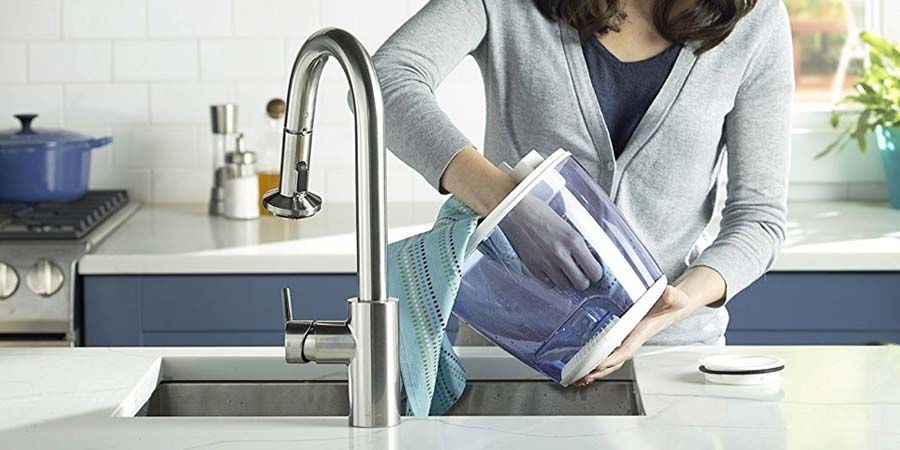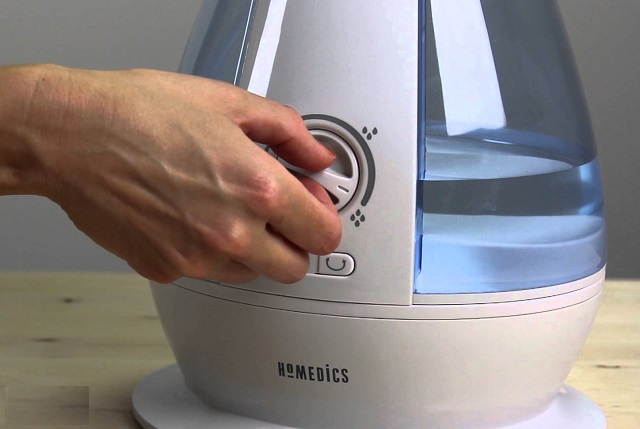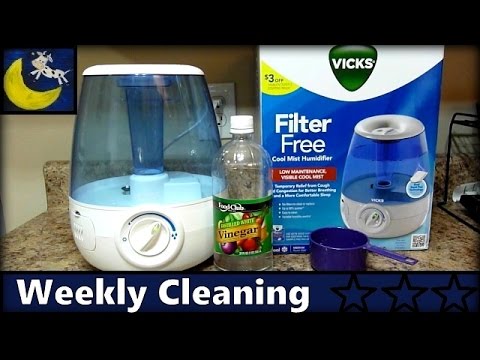Best Spot for Your Humidifier in a Nursery: Safety & Effectiveness
Struggling with dry air can be a real hassle, but a good humidifier’s a game-changer. However, it’s not just about having one—it’s where you place it that really matters. I’ve got some insider tips to help you find the perfect spot.
Placement is key to maximizing the benefits of your humidifier. You want to avoid dampness while ensuring your air’s not too dry. I’ll guide you through the dos and don’ts to make sure you’re getting the most out of your device.
We’ll explore the best places in your home for your humidifier, from the bedroom to the living room, and even the nursery. Stick with me, and you’ll discover how to create the ideal balance of humidity for comfort and health.
Importance of Humidifier Placement
Identifying the optimal location for your humidifier isn’t just about getting the most out of your device; it’s about reaping the maximum health benefits. When I position my humidifier correctly, it effectively alleviates symptoms associated with dry air like itchy skin, chapped lips, and nosebleeds. More so, it can help smooth out some respiratory issues that flare up, especially during colder months.
Your humidifier’s placement has a significant impact on indoor air quality. For example, if you position it too close to your bed, you may create an excessively moist environment, potentially fostering the growth of mold or dust mites. On the other hand, placing it too far away might reduce its efficacy, leaving much of the room’s air as dry as it was prior to using the humidifier.
Air circulation plays a crucial role in effective humidifying. I’ve learned that it’s crucial to place the humidifier in an area where air flows smoothly, but not in the direct line of heating or air-conditioning vents. A balanced placement enhances distribution throughout the space, ensuring the moisture released is evenly dispersed.
In larger rooms, strategic placement becomes all the more critical. By centering the humidifier, you increase its effectiveness, mitigating the risk of parts of the room being left dry. It’s essential to keep the device on a flat, stable surface to prevent any accidents involving spills or falls which could harm the humidifier or your flooring. And always remember, safety first — keeping your humidifier out of reach from children and pets ensures everyone’s well-being.
Maintaining the correct humidity levels within your living space isn’t just a matter of comfort; it’s a necessity for preserving wooden furniture and musical instruments that could be adversely affected by inconsistent humidity. Monitoring these levels with a hygrometer can help you gauge and adjust the humidifier’s output for an optimal indoor atmosphere.
Factors to Consider for Humidifier Placement
When you’re trying to figure out where to place your humidifier, there are several critical factors to bear in mind. I’ve found that understanding these considerations can go a long way in enhancing the performance of your device while protecting your health and your home.
Proximity to Your Living Area is key. You’ll want your humidifier positioned in a room where you spend a lot of time, such as the bedroom or living room. This ensures you reap the full benefits of the humidified air where it’s most needed. However, it should not be too close to where you sit or sleep. Distance helps in evenly distributing moisture.
Another vital aspect is Height from the Floor. Elevating the humidifier off the ground, preferably at least two feet, aids in the effective spread of moisture and prevents condensation on the floor. Yet, it’s crucial to ensure it’s not too high where mist can directly fall on electronic devices or other sensitive items.
Humidity Distribution and Ventilation must also be considered. Adequate ventilation helps prevent excessive humidity which can lead to mold growth. It’s a balancing act—you want the air to be moist but not damp.
Here’s what you should remember:
- Place it centrally in larger rooms for even distribution
- Keep it away from electrical appliances and vents
- Ensure it’s not directly under a ceiling fan as that can disperse the humidity too quickly
Room Size and Humidifier Capacity play a pivotal role. It’s important to match the output of your humidifier to the size of the room. Large rooms may require a more powerful humidifier or strategic placement near the center to cover the area effectively.
Lastly, consider Cleanliness and Maintenance. Place your humidifier where it can easily be accessed for regular cleaning and refilling. Leaving it in a hard-to-reach corner might discourage regular maintenance which is essential for healthy, clean air and the longevity of the device.
Best Places to Put a Humidifier in the Bedroom
When it comes to placing a humidifier in the bedroom, you’ve got to consider a few key areas to reap the maximum benefits while you sleep. Ideally, positioning the humidifier at least three feet away from your bed ensures sufficient moisture distribution without overexposing yourself directly.
Near the Bed for optimal breathing conditions. Having it close (but not too close) can provide the necessary humidity to combat dry air that can irritate your respiratory system. But remember, it’s important to strike a balance – too close could lead to excess humidity where you sleep.
On a Dresser or Nightstand at least two feet above the ground. This elevation helps in dispersing moisture evenly without causing puddles or excess moisture on surfaces which could potentially damage the furniture or create a breeding ground for mold.
In terms of specific spots, you’ll want to avoid placing your humidifier:
- Directly on the carpet as it can dampen and damage the fibers.
- Near electronics or sensitive wood furnishings because the moisture can be detrimental to these items.
Considering ventilation is key in the bedroom. It should be in a location where air circulates well but isn’t in the direct path of an air conditioner or heater vent that could disperse the moisture too rapidly or unevenly.
Remembering to position your humidifier for easy access will make routine cleaning and refilling less of a chore. Maintenance isn’t just convenient; it’s crucial. A humidifier that isn’t properly cared for can harbor bacteria and mold, which can be harmful when dispersed into the air. Regular cleaning ensures you’re breathing healthier air and extends the life of your humidifier.
By looking at the layout of your bedroom and measuring the space available, you’ll find the spot that meets these guidelines and provides you with restful sleep and optimal air quality.
Ideal Locations for a Humidifier in the Living Room
When deciding on the best spot for a humidifier in the living room, I aim for a location that maximizes comfort and air quality without compromising the aesthetics of my space. Key factors to consider include the humidifier’s reach and the room’s seating arrangement.
First, I always ensure the humidifier is centrally located to effectively distribute moisture. This means avoiding tucking it away in corners where airflow is limited. Instead, I prefer placing it near the center of the room or next to a main sofa or coffee table. Main seating areas benefit from better air quality, which can enhance the overall comfort for me and my guests.
Next, considering the size of the living room is crucial. If it’s large, I make sure to use a humidifier powerful enough to cover the area. Small to medium-sized units won’t do the trick in expansive spaces. For larger rooms, I look for models with extended run times and larger water tanks to minimize refilling frequency.
In terms of elevation, like in the bedroom, I place my living room humidifier at least two feet off the ground. A plant stand or a sturdy side table can serve as an ideal pedestal, allowing for a wide dispersion of moisture. This elevation also protects my wooden floors and helps avoid the development of mold or mildew on carpets or rugs.
Lastly, proximity to electronics and artwork is another consideration. I’m careful to place my humidifier away from TVs, sound systems, and any delicate items that moisture might damage. I also keep it distant from windows to maintain efficiency. Too close to a window and the moisture escapes, too far and I’m not reaping the benefits where I need them most.
Accessibility for maintenance remains vital; I don’t want to drag furniture around every time I need to clean or refill the humidifier. So I also consider ease of access in my living room setup. Ensuring a balanced, unobtrusive presence, the humidifier should enhance the living room environment without becoming a hassle or an eyesore.
Choosing the Right Spot for a Humidifier in the Nursery
When it’s time to introduce a humidifier into the nursery, safety and effectiveness are my top priorities. Nurseries are sensitive spaces; hence, the placement of a humidifier here deserves extra careful consideration. I always make sure it’s out of reach of the crib and changing station to prevent any potential accidents.
I recommend placing the humidifier on a stable, flat surface that’s at least two feet away from the crib. This aids in preventing excess moisture from gathering on bedding, which can attract mold growth or dust mites. It’s important to consider the flow of air in the room too. A spot where air circulates naturally, possibly near an air vent, enables the humidifier to spread moisture more evenly.
- Keep it away from direct contact with walls or furniture to avoid dampness that might damage the surfaces or prompt mold formation.
- If the nursery is large, consider a unit with greater output to ensure coverage across the entire room.
- Make sure there’s easy access for regular maintenance because a clean humidifier is crucial for a baby’s health.
The humidifier should also be placed where it won’t be a tripping hazard, with the power cord tucked away safely. Noise levels from the humidifier are another factor to think about; look for a model that operates quietly to avoid disturbing the baby’s sleep.
Opting for a humidifier with a built-in hygrometer or purchasing a separate one could be a smart move. By doing so, I can monitor and maintain the ideal humidity level which is typically between 30-50%. This balance is vital as overly humid air can be just as problematic as air that’s too dry.
Careful placement of a humidifier in the nursery not only ensures your baby’s comfort and health but also longevity and effectiveness of the device itself. By following these tips, it helps me create a conducive and safe environment for the little one to rest and grow.
Conclusion
Finding the perfect spot for your nursery humidifier is all about balancing safety, effectiveness, and maintenance. Remember to keep it out of arm’s reach from your little one’s curious hands and ensure it’s on a secure surface. By doing so, you’ll create a healthy environment that promotes serene sleep without the worry of mold or dampness. Keep an eye on humidity levels to provide the best care for your baby and the longevity of your humidifier. With these tips in mind, you’ll have peace of mind knowing you’ve made a smart choice for your nursery’s air quality.







